Are you thinking about opening an antique booth or flea market business? Or wondering what to sell in an antique booth?
Here today, I want to share with you an easy start-up shopping list for your antique booth or flea market inventory.
It doesn’t have to cost much to get started–I started my antique booth business for around $250! But it will take a little time and patience.
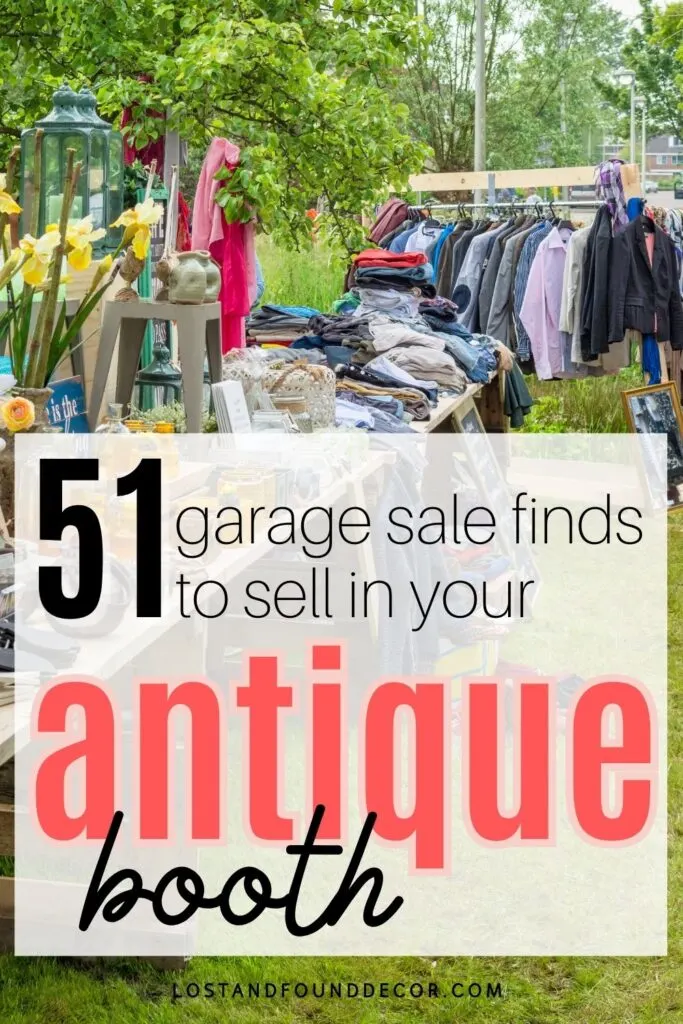
Starting an Antique Booth
An antique booth business is really quite easy to start! Most states don’t require any special type of license (although double check in your area), and usually the antique mall handles all the sales tax collection and payment.
My best tip for starting a successful vintage booth is to pick the right location.
What Makes for a Good Antique Booth Location?
Not all antique malls are equal! Some have more of a “flea market” model, where anything and everything is allowed to be sold.
In my experience, these types of stores generally sell lower-quality items at cheaper prices, which means you have to sell a ton of stuff every month to see a profit.
If you are looking to sell vintage items more suited for home decor, I would suggest looking for a location that is more of a true antique mall or home goods type store.
These stores tend to attract higher-end shoppers and you can usually get better prices for your items.
RELATED POST 5 Reasons You Aren’t Making Money in Your Booth or Vendor Business
Another tip is to start small. If this is the first time you’ve ever rented a booth, don’t pick the biggest one available!
Start with a small spot you can fill easily, and grow from there.
Antique Booth on a Small Budget
Like I said above, I started my antique booth business for about $250, which included the $60 of my first month’s rent.
Instead of going out shopping, first try “shopping” your house. You likely have things you no longer want or that don’t fit your current style, and that’s all free inventory!
Where else can you look for affordable inventory?
I suggest garage sales, thrift stores, and any seasonal outdoor flea markets you may have in your area.
What about estate sales?
In my experience, estate sale prices tend to be higher than garage sale or thrift store prices. Often the price of an item at an estate sale is about what I would sell it for in my own booth space, so there’s no profit left.
Sometimes you can find some good prices during the last few hours of the sale, when items are usually discounted.
Of course, all areas of the country are different. Becoming a successful antique booth owner means you will need to master what it looks like to source affordable inventory in your specific area, and that may take a little time and practice.
RELATED POST How to Shop at Flea Markets
What Sells in Antique Malls?
Even though a booth business rarely has the same items every month, there are some “types” of items you can buy and sell for double or triple (or more) of what you paid at a garage sale.
I have been buying and selling in an antique booth these kinds of items for the past 11 years, and they work for me over and over again.
Here’s one more pro tip.
This might be obvious, but in case it’s not: Look for items that have some age to them and a unique patina.
Are you ready for the list?
-
- Ornate Picture Frames—paint them or leave as is
- Architectural pieces—windows, doors, columns, etc.
- Old Silverware – people use these as accent décor, or even for creative repurposed projects.
- Silver-plate serving pieces—teapots, pitchers, platters
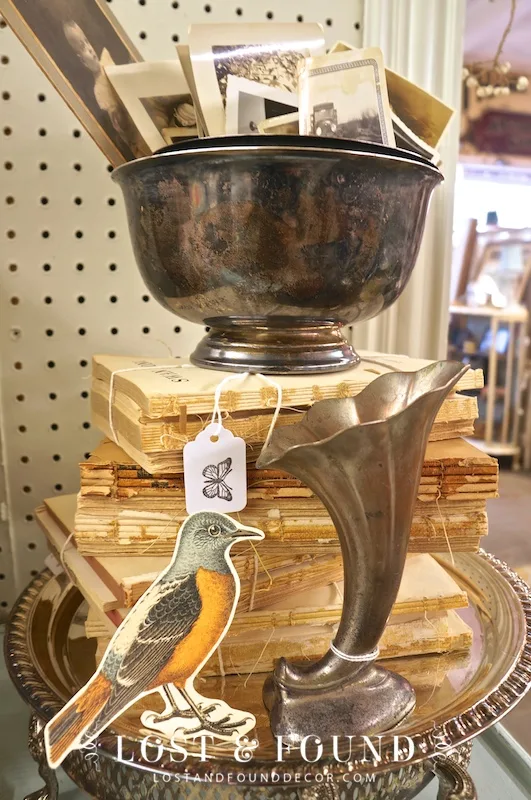
- China dishes, cups, serving platters – there are a lot of collectors who head to antique booths looking for that one thing they haven’t found.
- Sheets of Sheet Music
- Old / Vintage Photographs
- Paint by Number Art – These are harder to find, and have a vintage charm that people seem to enjoy.
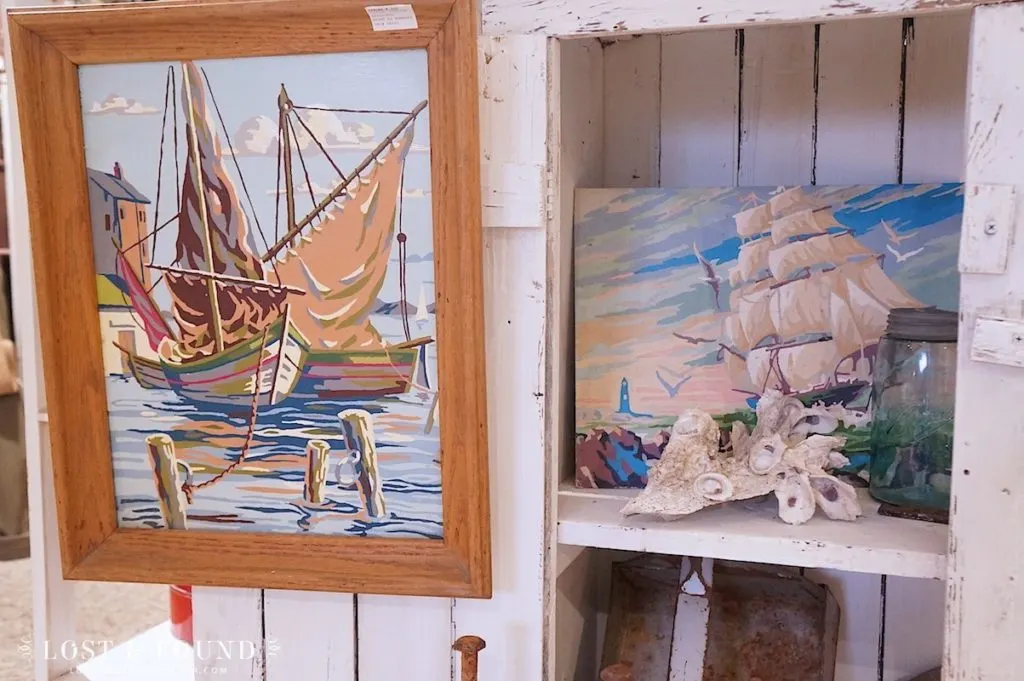
- Food tins – these are always good, but if they are old and you can still see the branding and words, they are even better.
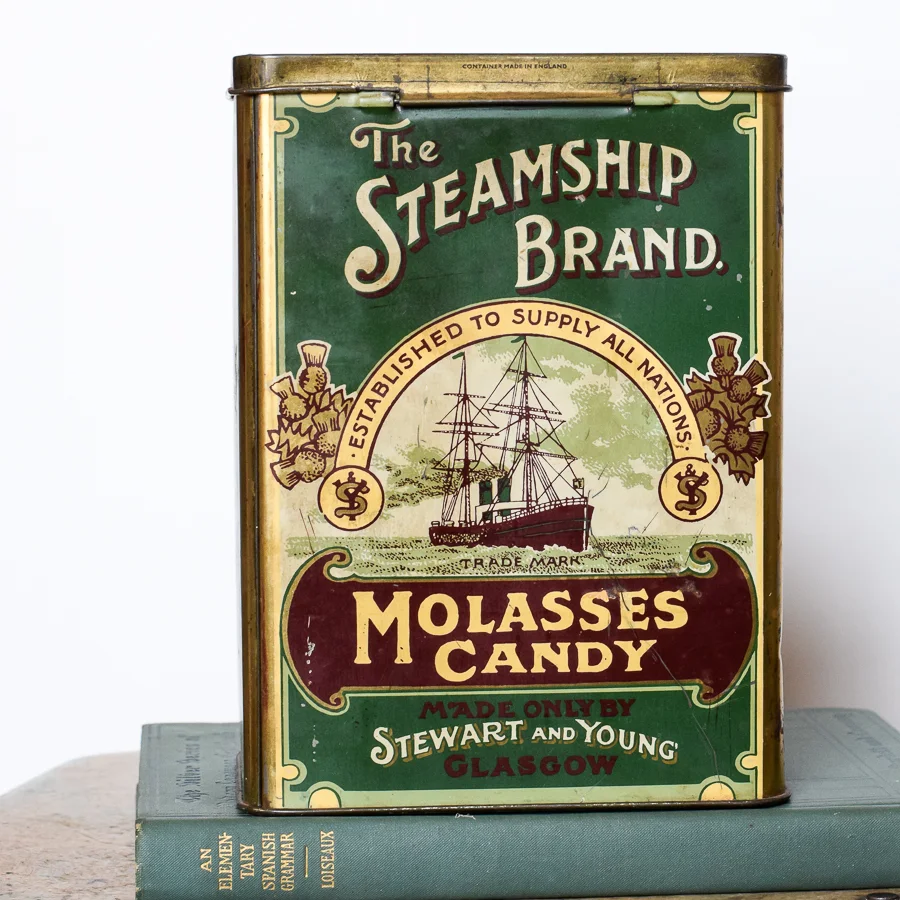
- Cutting boards
- Old bottles
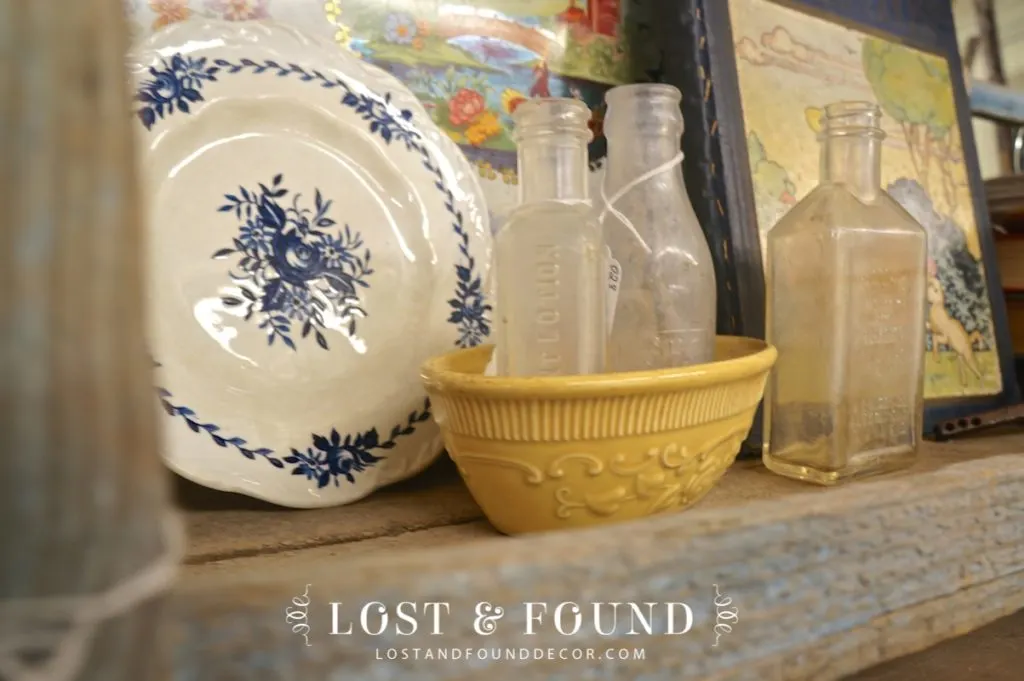
- Tools & Toolboxes – colored metal or old & rusty.
- Vintage furniture hardware—pulls and knobs
- Old door knobs
- Ceramic planters and pots
- Books—children’s books, novels, comic books, book sets. Try to look for vintage or aged…not brand new stuff.
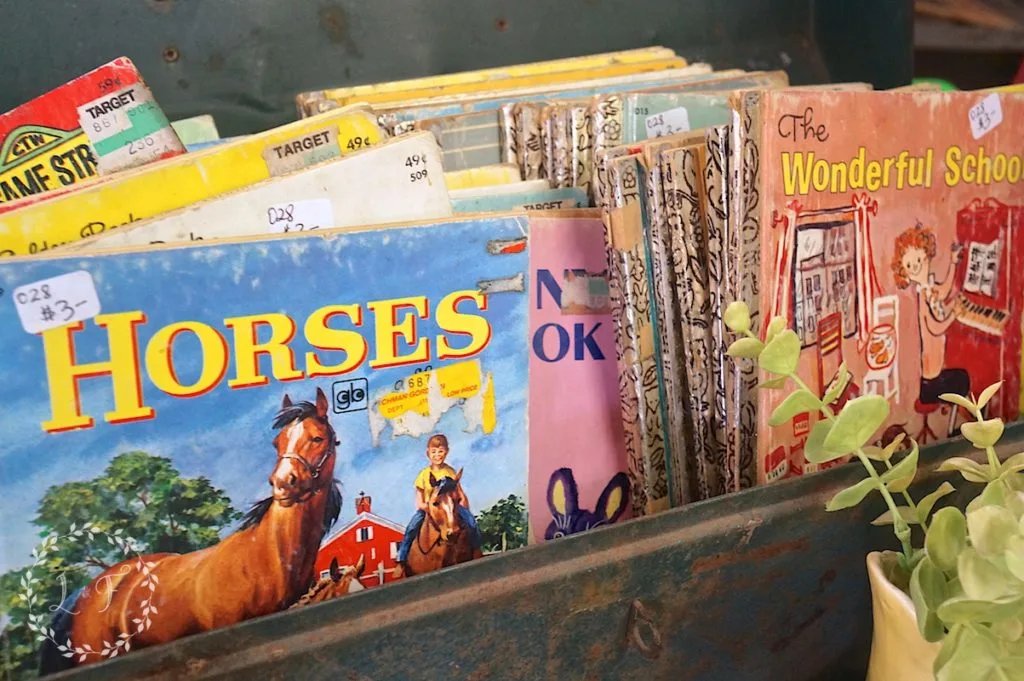
- Maps
- Film Reels
- Garden gates and fence pieces
- Garden tools
- Seed packets
- Old Wheelbarrows
- Ironstone pitchers, platters, etc.
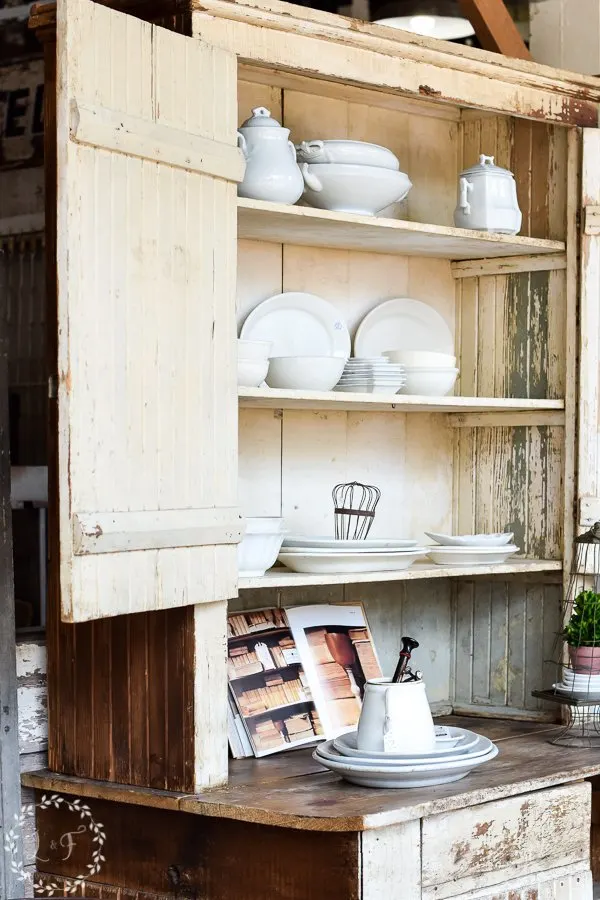
- Milk glass pieces
- Mason jars
- Baskets
- Old hand tools or woodworking tools
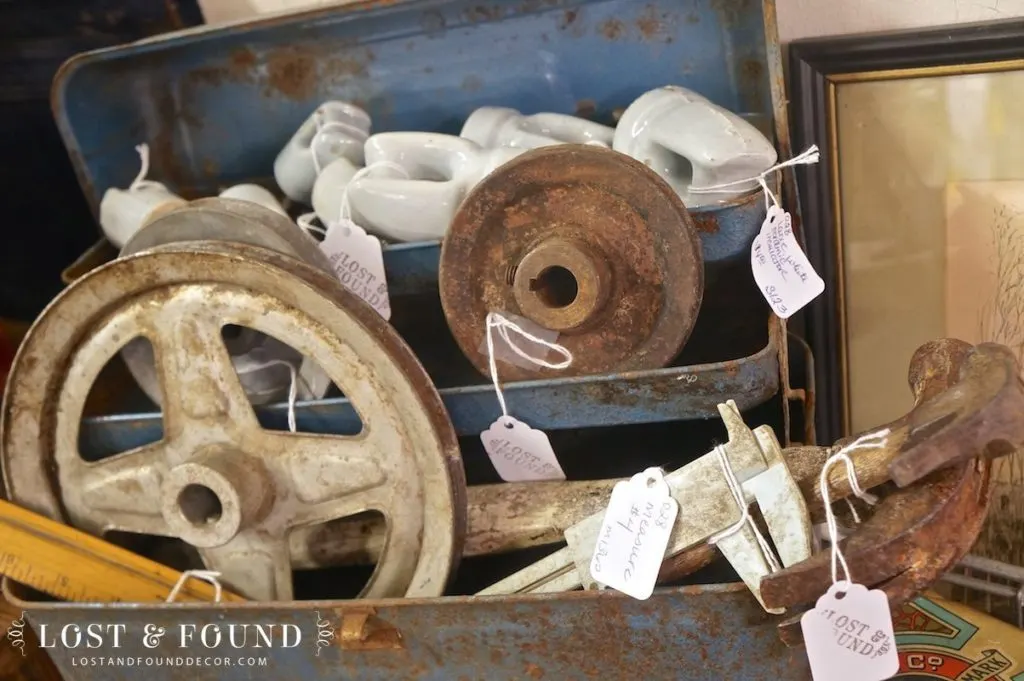
- Scrabble tiles – people often use these for crafts
- Vintage Jewelry
- Old Toys
- Older Baseball cards
- Board game boards—turn them into wall art!
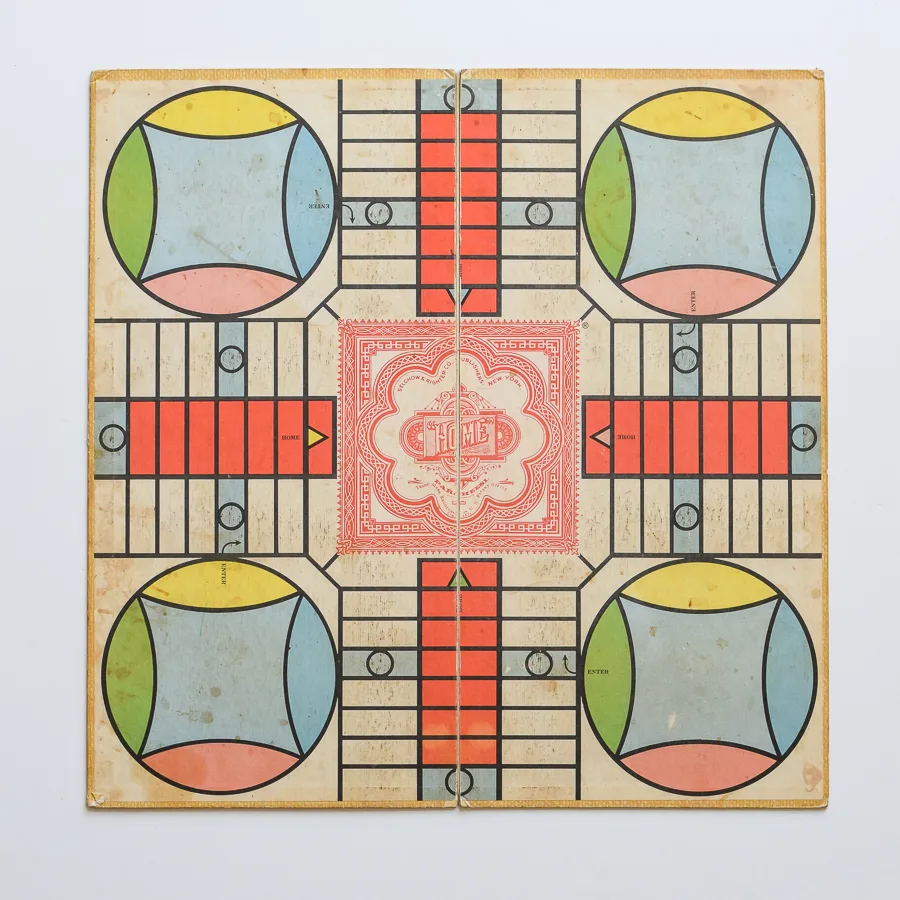
- Perfume bottles
- Mirrors of all sizes
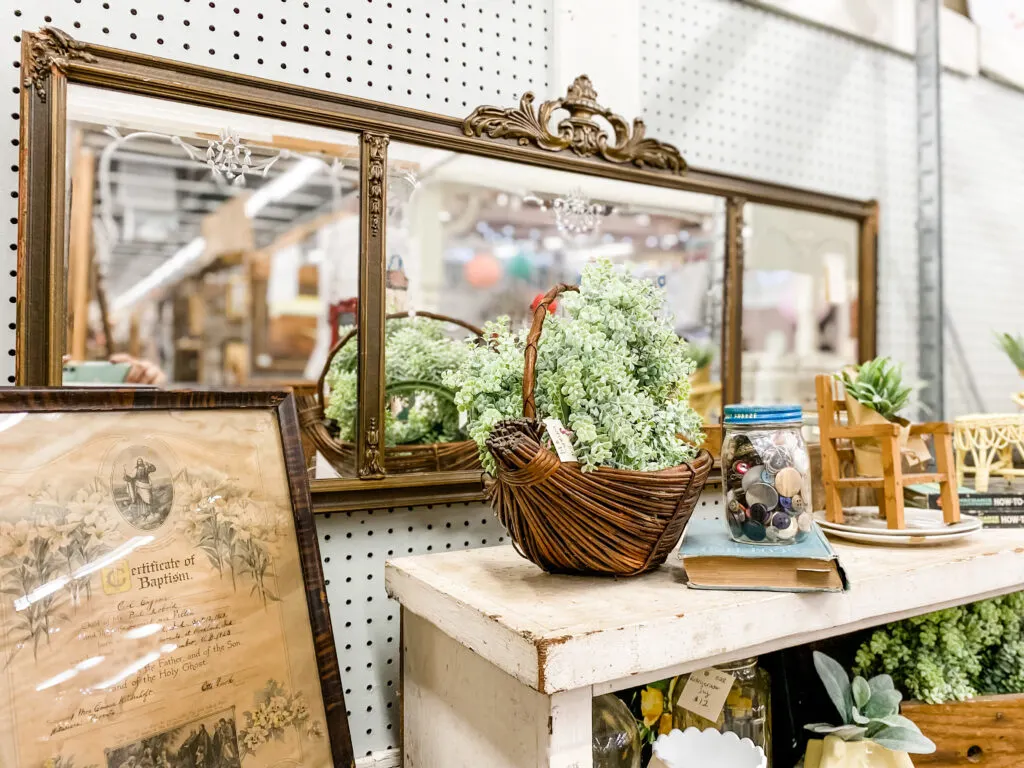
- Vintage Suitcases
- Porcelain Figurines
- Lamps—with or without shades, or just the shades!
- Table linens—tea towels, tablecloths, etc.
- Kitchen aprons
- Christmas tree ornaments
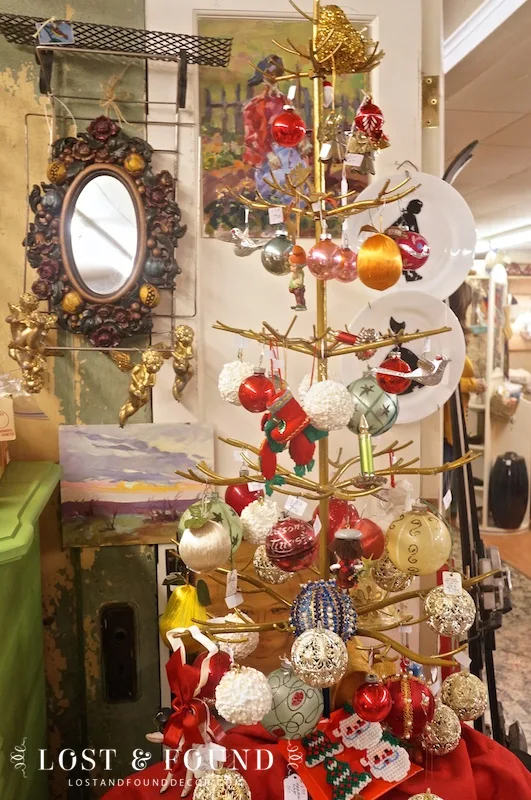
- Older Postcards
- Wooden ladders
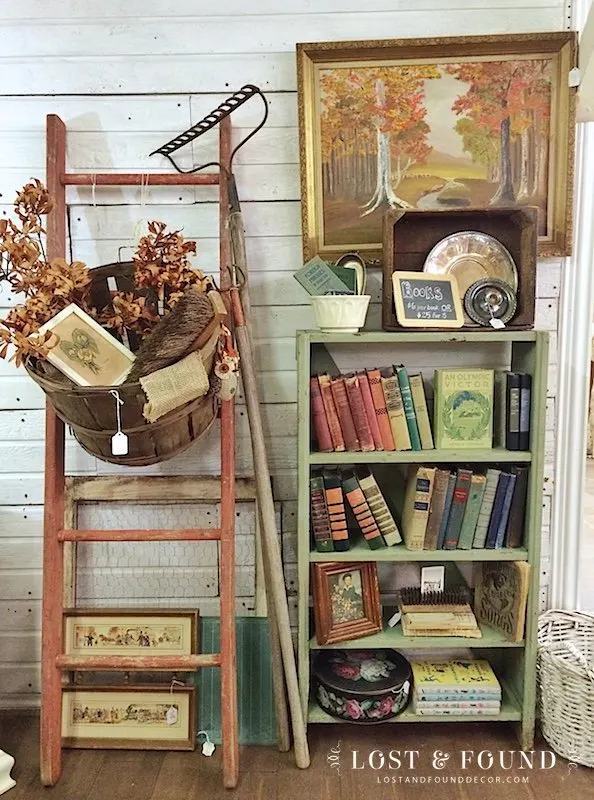
- Wooden crates and boxes
- Galvanized buckets
- Bird cages
- Oil cans
- Metal bed springs. Yes, the old individual springs!
- Wooden rolling pins
- Old kitchen utensils—wooden spoons, graters, etc.
- Yardsticks and rulers
- Vintage Quilts & other Bed Linens
There you go! Now you have 51 ideas of what to buy and resale to keep your booth stocked with items that people will buy time and time again.
How Can I Increase My Antique Booth Sales?
One way to increase your antique booth sales is to keep a good amount of “small” items in stock.
Not everyone walks in looking for big-ticket décor pieces, but if they like your small stuff, they’ll likely come back to see what else you have when they decide they need more.
You can also work on improving your display skills.
Gone are the days when customers are willing to sort through shelves of random items to find what they want.
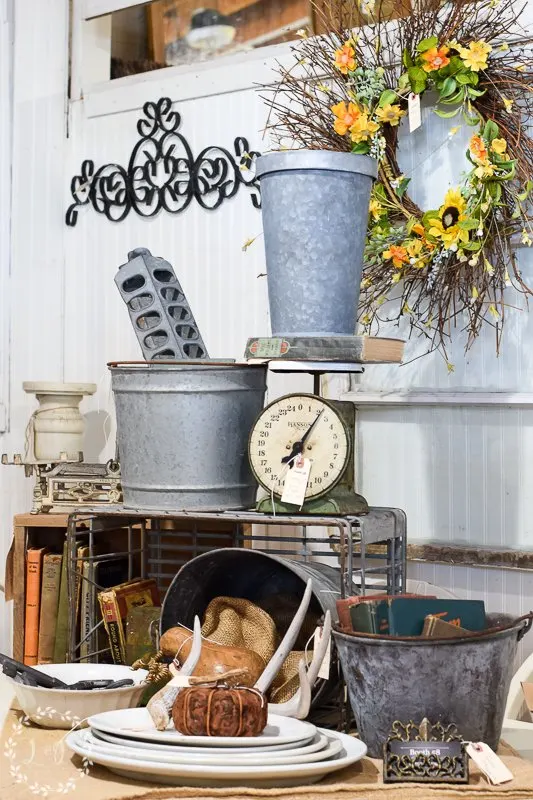
Antique mall customers of today want to see how they can use your items in their own homes for decor.
That means it’s best to put some thought into your displays, so they look more like a home goods store and less like a garage sale table.
You also want to consider how you are marketing your business.
Do you wait for the customers to come to you? Or are you doing your own marketing with free social media?
I am a big believer in using the power of social media to not only market but also brand your booth. Customers will follow you and look for whenever you bring in new items, which results in repeat sales.
Are Antique Booths Profitable?
Like any other business venture, not every antique booth or flea market booth will succeed.
But if you get into the right location and sell the right kind of inventory, I believe it can be a great way to generate extra income for you and your family.
The amount you can make depends on a lot of factors:
- Your customer base
- How much traffic your mall gets
- The types of items you sell
- The profit margin you have
You have to be paying attention to the fundamentals of your business in order to see dollars show up in your pocket.
Make sure you’re not paying too much for your inventory, shop smart!
Find a booth in a great mall where the customers are glad to pay higher prices for the best finds.
Watch for trends and do your best to stock what the customers around you are looking for.
Final Thoughts on Items to Sell in an Antique Booth
I’ve been in this business now for 11 years and it’s been a huge blessing to my family!
It’s been a fun and flexible way to make money for vacations, car down payments, and even regular monthly paychecks.
If you’re looking to start your own vintage booth business, the first step is to find your opening inventory. I hope the list above has given you some ideas of where to start.
Now it’s time to go hunt down those finds and start selling!
Wanna Read More Antique Booth Business Tips?
4 Ways to Jump Start Your Antique Booth Sales
Can You Make Money Selling at an Antique Mall?
4 Steps to Take your Antique Booth from Hobby to Business
4 Questions to Ask Yourself Before Becoming an Antique Dealer?
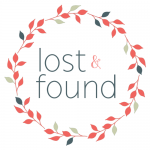
Chris Buchanan
Tuesday 9th of July 2024
Thanks for the tips, I’ve been out of the business for about 20 years. I needed some updated ideas!
Melanie Alexander
Thursday 11th of July 2024
You're welcome!